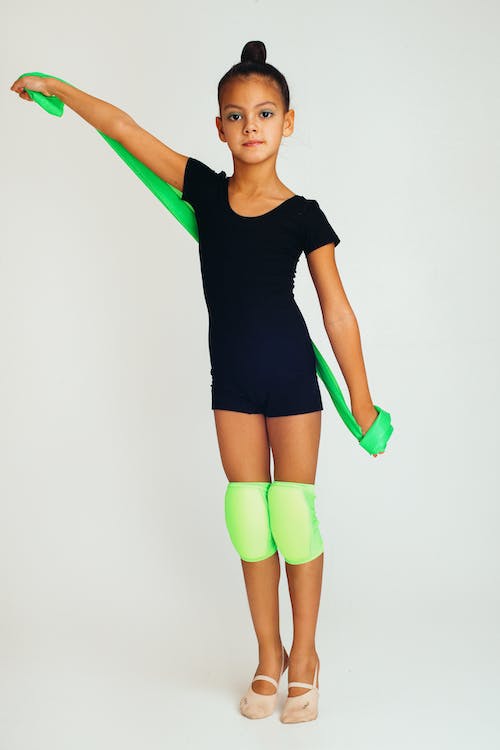
With back-to-school season in full swing, teachers are getting their classrooms ready, students are buying academic supplies, and student-athletes are already practicing for upcoming games.
Indeed, whether it’s football, volleyball, cheerleading, cross country, or gymnastics, fall is jam-packed with middle and high school students who are out to win.
But, according to the NCAA, “Of the nearly 8 million students currently participating in high school athletics in the United States, only 495,000 of them will compete at NCAA schools. And of that group, only a fraction will realize their goal of becoming a professional or Olympic athlete.”
The reason why athletes tend to do better even in business later in life or in education is because they have the skills.
WENDY HILLIARD
So if they’re not statistically likely to earn a college scholarship or go pro, why encourage Black youth to participate in sports?
“I’m a huge believer in what they call Olympism, which means you should be very good in sport, you should understand art, and you should understand education, and you should work the three of them together,” says Wendy Hilliard, founder and CEO of Wendy Hilliard Gymnastics Foundation.
In 1979, Hilliard was the first Black person to compete internationally for the United States in rhythmic gymnastics. She was on the national team for 10 years, moving up to become the national team coach, and then an Olympic athlete.
Once her competitive and performing days came to a close, Hilliard seized the opportunity to bring the sport back to Detroit, a decision that wasn’t easy but seemed so right.
Founded in 1996, the Wendy Hilliard Gymnastics Foundation provides free and low-cost gymnastics to youths from all backgrounds. With a gym located in her hometown of Detroit, Michigan, and another in Harlem, New York, WHGF opens doors for thousands of underserved children with a passion for movement.
And that passion for movement can help students gain the mindset they need to excel academically as well.
“You have to use what you learn from sports and apply it to your education, whether it is traditional education in school or outside education,” Hilliard says. “It’s the tenacity and determination — the reason why athletes tend to do better even in business later in life or in education is because they have the skills.”
The National Federation of State High School Associations says athletics are “an extension of a good educational program.”
Participation in school-sponsored athletics and clubs is associated with increased math and science test scores and higher expectations for attaining a bachelor’s degree, according to an analysis of national education data.
The NFHS notes that research shows “Students who participate in activity programs tend to have higher grade-point averages, better attendance records, lower dropout rates and fewer discipline problems than students generally.”
Supporting Your Student-Athlete
Although research shows there are clear academic benefits to being a student-athlete, students may sometimes not want to participate in a sport anymore.
There are also health considerations — especially at a time when unprecedented heat makes it dangerous for players to practice outside. High school football players are still disproportionately Black, despite the connection of concussions to traumatic brain injury. And, given Damar Hamlin’s collapse on the field or Bronny James’ sudden health scare, some students and parents may be re-evaluating whether playing a sport is really worth it.
Parents need to listen to their children.
WENDY HILLIARD
Hilliard’s own son, Bailey “BJ” Mensah, just turned 18. He’s currently on the national team for tumbling for USA Gymnastics, and he’ll be competing at the World Championships in England in November. Hilliard’s advice for raising young athletes? Listen to them.
“Parents need to listen to their children. Sometimes you need a break, which is fine, and if kids think they need a break, that’s OK,” Hilliard says. “If you need a rest, or you need a break, or you need to change — that’s even important when it comes to finding a coach or working with your coach. It’s all about communication.”
LGBTQ+ Rights in Sports
Black queer students are athletes too. But today’s students are competing in an era where the participation of gender non-conforming and trans students in sports is under attack.
In 22 states, local K-12 schools and state athletic associations have banned transgender student-athletes from participating in sports consistent with their gender identity. Meaning, transgender girls cannot compete with biologically born females, and transgender boys cannot compete with biologically born males.
Hilliard says it’s important to provide opportunities for all youths to grow, and thrive, but also not to scientifically disregard all the things that come with athleticism.
”It’s really important that people have the opportunity in whatever division that you’re in, but you do have to recognize that there is a difference in the development of a born at-birth males and females,” Hilliard says.
“It’s a big issue for a lot of female athletes. I just think everyone needs the opportunity to participate, that’s for sure.”
So for the 12-year-old football star whose main goal is to make it to the National Football League, or the Black girl who dreams of being the next Gabby Douglas, going for it could keep a student on track academically and build confidence. And sports teams can often be spaces that create more Black joy for students.
“I always look at my foundation as an asset because the kids are there,” Hilliard says. “The teachers look like them. They speak their language. It’s just such a joyful environment.”


